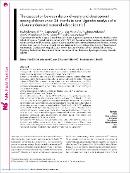| dc.contributor.author | Paul, Kakwangire | |
| dc.contributor.author | Cami, Moss | |
| dc.contributor.author | Nicholas, Matovu | |
| dc.contributor.author | Prudence, Atukunda | |
| dc.contributor.author | Ane, C Westerberg | |
| dc.contributor.author | Per, O Iversen | |
| dc.contributor.author | Grace, Muhoozi | |
| dc.date.accessioned | 2024-02-12T13:55:20Z | |
| dc.date.available | 2024-02-12T13:55:20Z | |
| dc.date.issued | 2021-03 | |
| dc.identifier.citation | Kakwangire, P., Moss, C., Matovu, N., Atukunda, P., Westerberg, A. C., Iversen, P. O., & Muhoozi, G. (2021). The association between dietary diversity and development among children under 24 months in rural Uganda: analysis of a cluster-randomised maternal education trial. Public Health Nutrition, 24(13), 4286-4296. | en_US |
| dc.identifier.uri | https://doi.org/10.1017/S136898002100077X | |
| dc.identifier.uri | https://hdl.handle.net/20.500.12504/1606 | |
| dc.description.abstract | Objective:
To assess the association between dietary diversity and development
among children under 24 months in rural Uganda and to establish other factors that
could be associated with development among these children.
Design:
A secondary data analysis of a cluster-randomised controlled maternal education trial (n 511) was conducted on a sub-sample of 385 children. We used adjusted ORs (AORs) to assess the associations of dietary diversity scores (DDS) and other baseline factors assessed at 6–8 months with child development domains (communication, fine motor, gross motor, personal–social and problem solving) at 20–24 months of age.
Setting:
Rural areas in Kabale and Kisoro districts of south-western Uganda.
Participants:
Children under 24 months.
Results:
After multivariable analysis, DDS at 6–8 months were positively associated with normal fine motor skills development at 20–24 months (AOR = 1·18; 95 % CI 1·01, 1·37; P = 0·02). No significant association was found between DDS and other development domains. Children who were not ill at 6–8 months had higher odds of developing normal communication (AOR = 1·73; 95 % CI 1·08, 2·77) and gross motor (AOR = 1·91; 95 % CI 1·09, 3·36) skills than sick children. Girls had lower odds of developing normal gross motor skills compared with boys (AOR = 0·58; 95 % CI 0·33, 0·98). Maternal/caregiver nutritional education intervention was positively associated with development of gross motor, fine motor and problem-solving skills (P-values < 0·05).
Conclusions:
We found an association between child DDS at 6–8 months and improvement in fine motor skills development at 20–24 months. Child illness status, maternal/caregiver nutritional education intervention and sex were other significant baseline predictors of child development at 20–24 months. | en_US |
| dc.language.iso | en | en_US |
| dc.publisher | Public health nutrition | en_US |
| dc.subject | Children | en_US |
| dc.subject | Dietary diversity | en_US |
| dc.subject | Maternal education | en_US |
| dc.subject | Rural Uganda | en_US |
| dc.subject | Child development | en_US |
| dc.title | The association between dietary diversity and development among children under 24 months in rural Uganda: analysis of a cluster-randomised maternal education trial | en_US |
| dc.type | Article | en_US |

